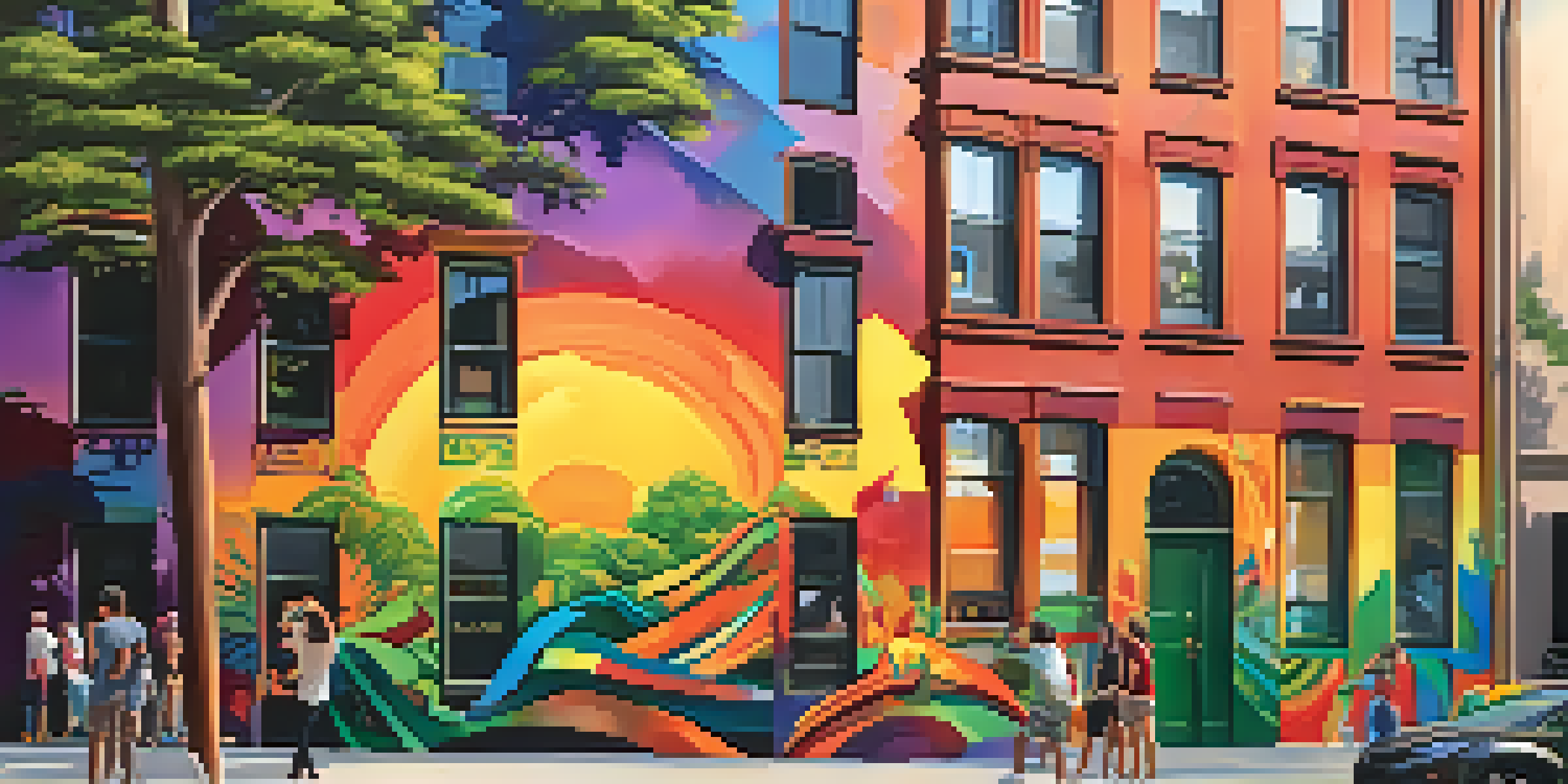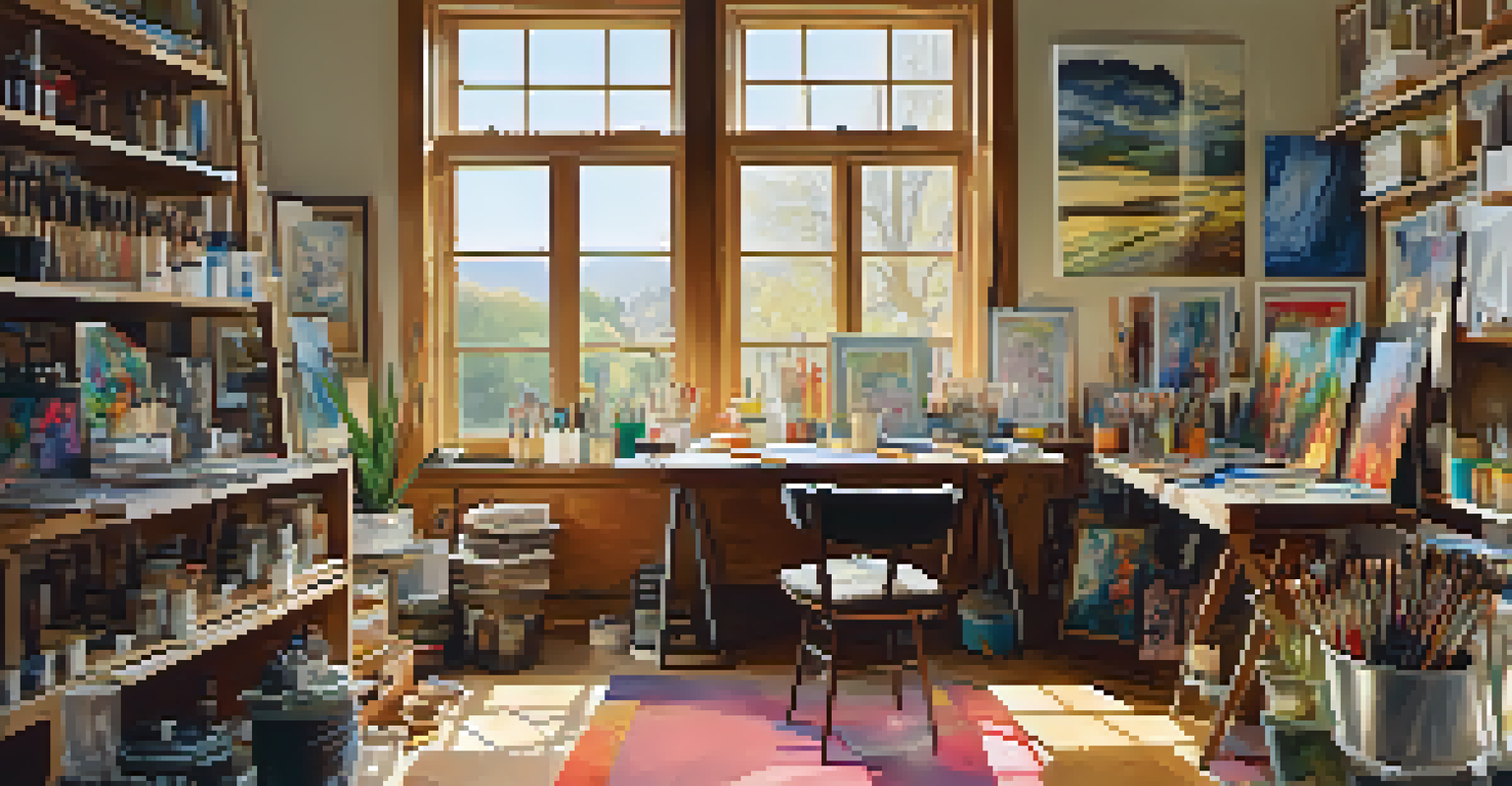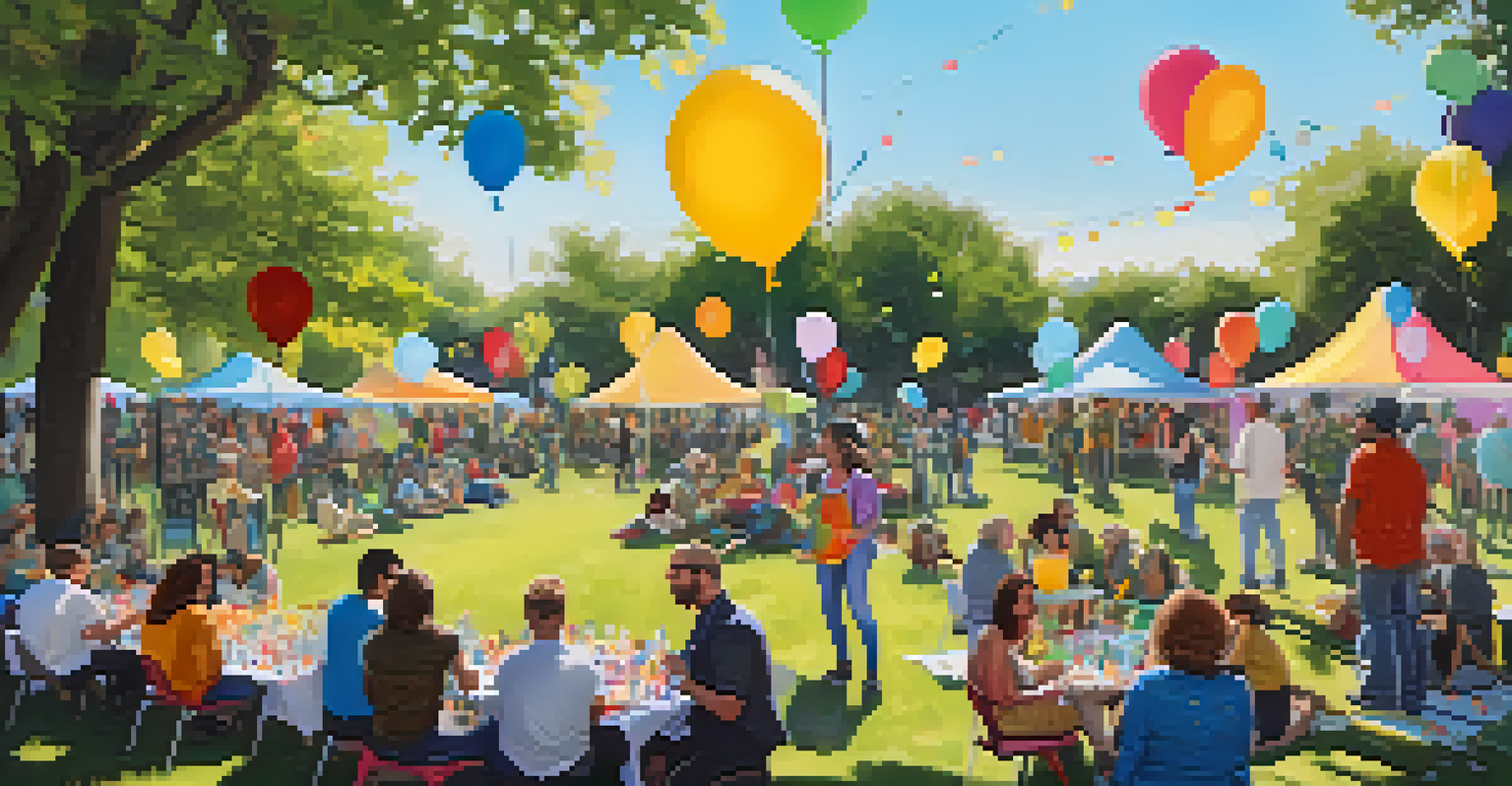Social Media's Role in Democratizing Art Access

The Shift in Art Accessibility Through Social Media
In recent years, social media has transformed how we experience art, breaking down barriers that once limited access to galleries and exhibitions. Platforms like Instagram and TikTok allow artists to showcase their work directly to audiences worldwide, bypassing traditional gatekeepers. This shift not only empowers creators but also invites art enthusiasts from diverse backgrounds to engage with art in ways they never could before.
Art enables us to find ourselves and lose ourselves at the same time.
Imagine scrolling through your feed and discovering a stunning painting from an artist halfway across the globe. Social media has created a virtual gallery where every scroll can introduce you to unique perspectives and styles, enriching our understanding of art. This accessibility fosters a sense of community among artists and art lovers, encouraging dialogue and collaboration that transcends geographical boundaries.
Furthermore, the immediacy of social media allows for real-time feedback and interaction, which can be incredibly motivating for emerging artists. They can receive comments, shares, and likes that validate their work, helping to build their confidence and careers. In this way, social media not only democratizes access to art but also nurtures a new generation of artists and art advocates.
Building Communities Around Shared Artistic Interests
Social media platforms have become breeding grounds for communities that celebrate various art forms and styles. Hashtags, groups, and pages dedicated to specific genres or movements create spaces for individuals to connect over shared interests. Whether it's street art, digital illustrations, or traditional painting, these communities provide a sense of belonging and support for both artists and admirers.

For instance, artists can join local and global groups to share their work, seek advice, or collaborate on projects. This kind of interaction fosters a sense of camaraderie, allowing artists to learn from one another and share resources. The collective growth within these communities often leads to exciting collaborations and innovative projects that might not have emerged in isolation.
Art Access via Social Media Grows
Social media platforms like Instagram and TikTok have democratized art access, allowing artists to reach global audiences directly.
Moreover, these communities often amplify underrepresented voices, ensuring that diverse perspectives are not just included but celebrated. By actively participating in these spaces, individuals contribute to a richer cultural tapestry, making art more inclusive and representative of different experiences and backgrounds.
Breaking Down Financial Barriers to Art Engagement
Traditionally, accessing art has come with financial barriers, from ticket prices for galleries to the cost of art supplies for aspiring creators. Social media has helped to dismantle these obstacles by providing free platforms for artists to showcase their work and for audiences to engage with it. This democratization means that anyone with an internet connection can explore and enjoy art without needing a hefty budget.
The role of the artist is to make the revolution irresistible.
Additionally, many artists share free resources, tutorials, and insights into their creative processes on social media. For aspiring artists, this means they can learn techniques and gain inspiration without investing in costly classes or materials. The emphasis on sharing knowledge helps to nurture talent and creativity at all levels, fostering a culture of learning and growth.
Furthermore, social media campaigns often highlight the importance of supporting local artists, encouraging people to purchase artwork directly from creators rather than through intermediaries. This not only helps artists financially but also strengthens community ties, as individuals invest in the talent around them, making the art world more accessible and equitable.
The Role of Technology in Art Creation and Sharing
Technology plays a crucial role in the way art is created and shared today, and social media is at the forefront of this evolution. Digital tools and platforms allow artists to experiment with new mediums and styles, opening up endless possibilities for creativity. From graphic design software to digital painting apps, technology has democratized the tools needed for artistic expression.
Social media also facilitates the sharing of digital art forms, which often challenge traditional perceptions of art. Artists can create animations, interactive installations, and virtual reality experiences that captivate audiences in unique ways. These innovations not only enhance engagement but also redefine what it means to be an artist in today’s digital age.
Community Support for Artists Flourishes
Online communities foster collaboration and support among artists, enhancing their growth and amplifying diverse voices in the art world.
Additionally, technology enables artists to reach wider audiences through strategic use of algorithms and targeted promotions. By understanding how to leverage these tools, creators can ensure their work is seen by those who are most likely to appreciate it. This level of engagement reinforces the idea that art is not just for a select few but is meant to be experienced and enjoyed by everyone.
Social Media as a Platform for Social Change in Art
Social media has become a powerful tool for advocating social change through art, allowing artists to address important issues and connect with like-minded individuals. Movements such as Black Lives Matter and climate action have inspired countless artists to create pieces that reflect their beliefs and promote awareness. This fusion of art and activism encourages dialogue and action, making art a vehicle for change.
Through their work, artists can spark conversations about pressing topics, from racial inequality to environmental issues, reaching audiences far beyond traditional art spaces. The viral nature of social media means that impactful pieces can gain traction quickly, amplifying the message and encouraging collective action. This dynamic shift highlights the role of art not just as decoration but as a catalyst for societal reflection and progress.
Moreover, social media allows for diverse narratives to be told, giving voice to those who may have been silenced in more conventional art settings. By sharing their stories and experiences, artists contribute to a richer understanding of various social issues, fostering empathy and awareness among their followers. This interconnectedness between art and social change illustrates the profound impact social media has on democratizing not only art access but also the messages that art can convey.
Challenges of Art Exposure in a Crowded Digital Space
While social media has made art more accessible, it also presents challenges in a crowded digital landscape. With millions of creators vying for attention, it can be difficult for individual artists to stand out and gain recognition. This saturation can lead to frustration for creators who feel their work is lost in the noise, making it essential to develop strategies for visibility.
Artists often have to balance the need for authenticity with the pressures of social media algorithms that favor certain types of content. This can create a dilemma where artists feel compelled to conform to trends rather than expressing their unique voice. Striking this balance is crucial for maintaining personal integrity while also reaching a wider audience.
Tech Shapes Art Creation and Sharing
Advancements in technology and social media enable innovative art forms and allow artists to engage wider audiences effectively.
Additionally, the constant influx of new content can lead to viewer fatigue, where audiences become desensitized to art and creativity. To combat this, artists must find innovative ways to engage their followers, whether through storytelling, interactive posts, or collaborations. By fostering genuine connections with their audience, artists can create a loyal following that appreciates their work beyond just the aesthetic.
The Future of Art in the Age of Social Media
As we look to the future, the role of social media in the art world is likely to continue evolving. Emerging technologies such as augmented reality and artificial intelligence are already beginning to influence how art is created and experienced. These advancements hold the potential to further democratize art access, offering immersive experiences that engage audiences in new ways.
Moreover, the growing focus on mental health and well-being has led to an increased appreciation for art as a therapeutic tool. Social media can play a vital role in promoting the healing power of art, encouraging individuals to create and share their work as a form of self-expression. This shift underscores the idea that art is not only for consumption but can also serve as a source of comfort and connection.

Ultimately, the future of art in the age of social media will likely be characterized by inclusivity and collaboration. Artists from all walks of life will continue to find their voices, using social media as a platform to share their stories and experiences. As this trend grows, we can look forward to a more vibrant and diverse art landscape that truly reflects the world we live in.